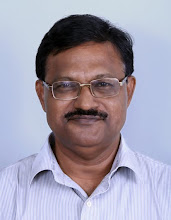Assist additional paddy cultivation in 2 lakh hectares
of paddy-fields lying uncultivated
The government should set apart Rs 300 crore for paddy cultivation in uncultivated paddy fields and for animal husbandry. Rs 200 crore should be for providing a subsidy of Rs 1000 per hectare to undertake additional paddy cultivation in two lakh hectares of paddy-fields lying fallow, according to Gandhiji Study Centre chairman P J Joseph.
If assistance of Rs 1000 per hectare is made available, agricultural operations in two lakh hectares more can be undertaken in the organic way, he said.
As animal husbandry goes hand-in-hand with agricultural operations, an allocation of Rs 100 crore should be made for animal husbandry, including rearing of milch-cows. Assistance should also be provided for inland fisheries.
Joseph was inaugurating a seminar organised by CHASS (Changanasserry Social Service Society) in connection with the Farmfest 08, conducted jointly by AIR’s Vayalum Veedum programme and Changanasserry municipality the other day.
Development is impossible, alienating the farmers who form 60 per cent of the people. The paralysis of the farming sector has adversely affected the production sector. Rice, milk, vegetables, eggs etc are not available in Kerala in sufficient quantity.
In 1991, agriculture formed 31 per cent of the Gross Domestic Product. Now it has come down to 18 per cent. Which means the income of the agricultural and rural sector has been reduced to 18 per cent. The per capita income of the farmers and rural folks has come down drastically. Industry forms 26 per cent and the Services sector 56 per cent of the GDP. When economic growth registered 9-10 per cent, the agricultural growth is a mere 2.2 per cent.
The indebtedness of the farmers and rural folks should be cleared. A national debt relief legislation should be brought forward. Sufficient farm loans are not available at 7 per cent. Commercial banks should also be got involved in the farmers’ debt relief operations. Electricity subsidy is not available for farmers. The inputs of the farmers are thus going up, but farm products are not fetching fair returns. The stifling situation leads farmers to suicides.
In Kerala, there used to be paddy cultivation in nine lakh hectares, which got reduced to seven lakh hectares, five lakh hectares and the like. At present paddy cultivation is confined to 2.75 lakh hectares. Paddy cultivation has turned unremunerative. Therefore paddy-fields are left uncultivated.
Joseph said he had also participated in the farm operations undertaken by a few agriculturists in three acres left fallow all these eight years. The organic farming done there was beneficial.
This way, each village should have new cultivations in about 100 acres of fields left fallow, for which assistance should be provided. It is not fair to insist on the 60 per cent farmers to sell their milk and rice suffering losses to the 40 per cent people who are comparatively well off. Also, when production decreases, prices would again go up.
Agriculture and animal husbandry are inter-mingled. Lack of nutrition can be tackled by milk and milk products. The per capita consumption of milk in Kerala is a mere 173 gm, when it is 300 gm in AP and 600 gm in Punjab.
Milk production in Kerala should increase substantially for which embryos of high-yielding varieties of cows from Israel should be imported. An Israeli cow provides 12,000 litres of milk per lactation, whereas the output in other countries is 8,000 litres and in Kerala it is 1,200 litres per lactation. Buffaloes from other States should be brought to Kerala.
Dr K G Padmakumar, Sivakumaran Thampi, Dr R Vijayakumar, Nimi George, Dr R Sivaprasad, Dr P V Mohan, Divakaran Nambiar, Joseph Kora, Jims Joseph Pothen, Surendran Pillai Kulathoormoozhy, Dr N Sudhodanan. Dominic and others shared their experiences in various fields.
Friday, February 22, 2008
Subscribe to:
Post Comments (Atom)


.jpg)



No comments:
Post a Comment